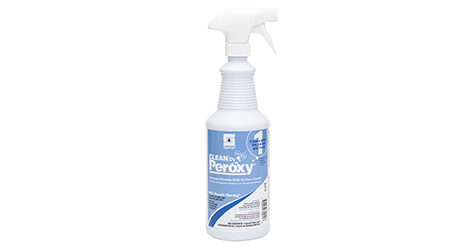Commercial facilities often install carpet to create a comfortable, visually pleasing environment for visitors and occupants. You can choose from numerous types, including plush, bold carpet perfect for an at-home feel in an upscale hotel or modern carpet tiles that make for easy installation and maintenance in large airports. Although carpet can be a more cost-efficient solution compared to hard flooring options, it is a significant investment for most organizations and requires regular maintenance to keep it in great shape.
Carpet in high-traffic facilities can face unique challenges over time. To maintain appearance and avoid costly issues, it’s essential to implement a carpet care program that incorporates the best tools and methods.
Avoid common mistakes
With so many types of carpet care equipment, chemicals, and tools on the market today, it can be overwhelming to understand the benefits and drawbacks of each. Additionally, frequent staff turnover can complicate training, resulting in standard operating procedure lapses that can negatively impact the look and lifespan of carpet.
Consider the following don’ts of carpet care:
Don’t—Perform carpet care infrequently. In some facilities, carpet cleaning is considered an afterthought. It isn’t until a large spot or stain appears that employees take action. However, caring for carpet goes beyond reacting to spills and other problems—it requires daily maintenance and care.
Don’t—Fail to install a proper matting system. Matting is crucial to keeping carpet clean, especially considering that 85% of the soil that enters a facility comes from visitors’ shoes, according to a cleaning guide from Whittaker Co. A comprehensive matting program can help to absorb liquids, such as muddy water and snow slush, and capture the first 5 to 6 footfalls of soil before shoes meet carpet. Many facilities only utilize indoor or outdoor matting, but not both, which can significantly impact floor cleanliness. Additionally, failing to regularly clean or replace matting can make matters worse.
Don’t—Use the wrong vacuum. Routine vacuuming removes 90% of all dry soil, according to the Carpet and Rug Institute (CRI). Not all vacuums are suited for the same carpet type and construction, so it’s important to select and regularly use the right vacuum. Using the wrong vacuum could leave large amounts of dirt and other debris in carpet fibers, leading to soiling and difficult-to-remove stains. Vacuums should be certified by the CRI to effectively remove dirt, even from thick carpet pile. It’s also important for facility managers to establish a vacuuming schedule that aligns with traffic volumes in specific areas, as well as weather conditions. Employees should empty vacuum bags once they are half full to keep the vacuum running at peak performance.
Don’t—Frequently use large volumes of water. Some hot water extraction methods require hundreds of gallons of water. If that water isn’t properly removed and quickly dried, it can lead to disastrous results. A study commissioned by DPM Floor and Upholstery Care found that traditional hot water extraction can cause a 150% increase in the growth of microbial content, impacting the cleanliness and health of a facility. In addition to causing mildew and dry rot, over-saturating carpet with water during cleaning can also degrade the backing system and unravel seams.
Don’t—Fail to match the type of chemistry to the stain or spot. From wine and coffee to paint and oil, spills happen. Your cleaning approach and chemistry should depend on the type of stain. For example, removing an organic stain caused by urine or vomit requires a chemistry that is specifically formulated to eliminate odor-causing contaminants, whereas oil and grease stains require a formula that is water-based and nonflammable. However, facilities often use multipurpose cleaning chemistries to address all spills and spots, often resulting in resoiling or permanent stains.
Don’t—Assume employees know everything. The world of jansan sees high turnover rates, averaging around 200% annually, according to a whitepaper from 4M Building Solutions. For a company with 100 janitorial employees, that’s 200 new hires every year. Some new hires may be new to the world of cleaning and all will require proper training. Assuming your staff knows everything and forgoing proper carpet care training can result in incorrect chemistries or improper machinery for everyday challenges.

When incorporated into a full carpet care program, low-moisture encapsulation can lead to cleaner carpet and a better overall indoor environment. Image courtesy of Whittaker Co.
Follow proper procedures
Carpet care requires a calculated approach and involves not just the right equipment and tools but also proper training. Carefully adhering to best practices will help employees be more productive and ensure that carpet looks its best.
The following recommendations will set your operation up for success:
Do—Incorporate low-moisture encapsulation. The low-moisture encapsulation method helps maintain consistent appearance, extends carpet lifecycles, and reduces the dry time to as little as 20 to 30 minutes. It can be repeated regularly to remove soil particles from carpet and prevent resoiling, while also extending the time between wet extractions. When incorporated into a full carpet care program, low-moisture encapsulation can lead to cleaner carpet and a better overall indoor environment.
Do—Regularly conduct visual inspections for spots and stains. Keep a sharp eye out for spots and stains and make sure to address spills immediately. Train and remind staff to properly address and remove different spills to prevent
permanent soiling.
Do—Have a range of chemistry on hand. A comprehensive carpet care program includes a wide range of chemistry that is suited for any challenge. Look for low-moisture encapsulation chemistry that prevents the buildup of sticky chemical residues and soils. Chemistries should be environmentally friendly and safe for all carpet types, so consider chemistries with the Green Seal Certification, WoolSafe Approval, and Carpet and Rug Institute Seal of Approval.
Do—Prioritize proper care and maintenance of equipment. After cleaning carpet, it’s important to properly care for equipment. This can include washing and disinfecting brushes and addressing any buildup in the spray nozzle that may interfere with cleaning. Whenever equipment requires replacement or updates, make sure to follow the manufacturer’s instructions and conduct this maintenance quickly to prevent future downtime.
Do—Check in with employees to ensure they are following procedures. Once you have implemented a proper carpet care program, it’s critical to follow up with staff after some time has passed to keep best practices top of mind. Schedule regular check-ins with your workers to follow up on any challenges they may be facing and address problems as soon as possible.
Carpet care done right
Proper carpet care has numerous benefits, including increased productivity, faster dry times, and cost savings. To properly maintain carpet and extend carpet lifecycle, identify best practices that don’t harm carpet in the long run. By using a four-step program that focuses on preventative, daily, interim, and restorative cleaning—and avoiding the aforementioned carpet care mistakes—facilities can protect carpet color and texture, improve its overall appearance, and reduce the buildup of dirt and sticky chemical residues.




